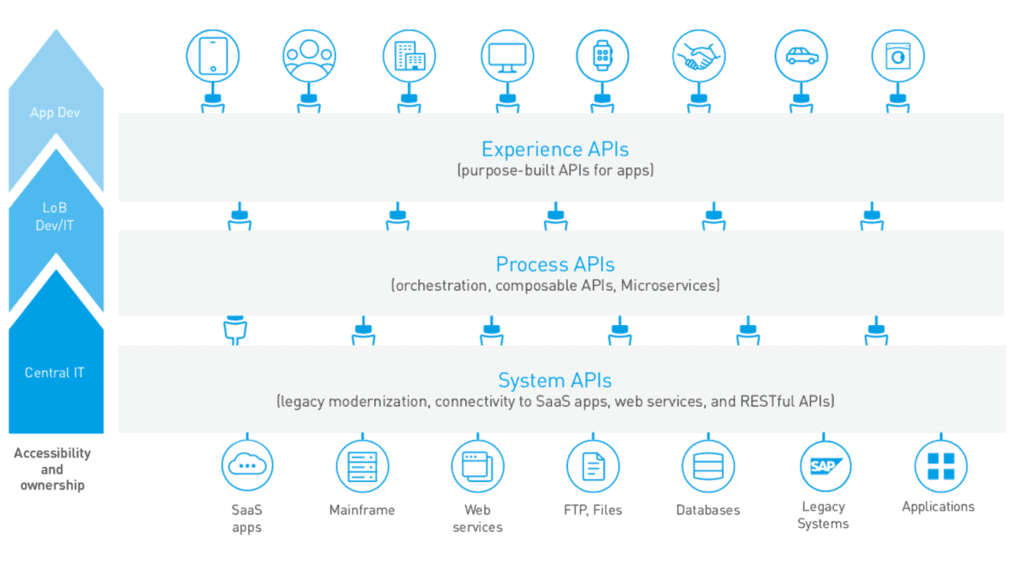Today’s disruptive technology is API—the inseparable second half of an iPaaS setup. Everyone has heard the wildly successful stories of Uber, Airbnb, Lyft, Stripe, and so on. Part of what makes these brands so successful is the fact that they are API-first companies. This means they lead all their data integration efforts through APIs. The top advantages APIs offer the typical business organization are…
– Innovation—Easily launch new products and services
– New channels of revenue
– A single view of the customer, patient, and employee data
– Fast onboarding of partners and suppliers
– Security over your key data and enterprise capabilities
– Ability to apply policies that create tiered access
– Deep insights and analytics into your business transactions
– Ability to publish your APIs to the community portal
– Standardization through the adoption of REST / JSON
Let’s take a deeper look at what API-led connectivity is and the different types of APIs that work together in a typical iPaaS.
What is API-led connectivity?
API-led connectivity is an approach pioneered by MuleSoft. It not only allows organizations to break down the data silos, but it also helps them with accelerated delivery through reuse and self-service.
API-led connectivity helps organizations create composable building blocks that can be easily discovered and assembled to form new business capabilities.
Organizations wanting to modernize themselves through cloud-first and mobile-first initiatives have a friction-free experience between the systems as they upgrade them to SaaS platforms. Thanks to APIs. With the API-led approach, central IT can produce and deliver faster, minimizing the delivery gap and liberating resources for even more innovation.
Take a look at how MuleSoft explains the role of APIs with this diagram:

Varieties of APIs
System APIs: System APIs are meant to hide the complexities of a system of records and decouple them from each other. These APIs can expose the data in a standardized manner as objects relevant to the domain building blocks. Central IT can develop and own these APIs.
Process APIs: These APIs break down data silos by consuming domain data objects produced through system APIs and orchestrating the business logic to deliver new business capabilities. LOB IT can own such APIs.
Experience APIs: Finally, experience APIs. These are created by keeping user experience in mind—they are very purpose-built and lightweight. They can represent a consumer experience either for a specific channel or for an end system application. Application developers own these APIs.
This style of architecture is completely future-proof as technologies within integration evolve. While eliminating brittle point-to-point approaches taken by many organizations, API-led connectivity creates reusable building blocks that are granular, microservices-compliant, easy to manage, and scalable to your business needs. The API-led approach democratizes your API ecosystem through self-service, which eventually can manifest into application networks and create a truly connected enterprise.














0 Comments